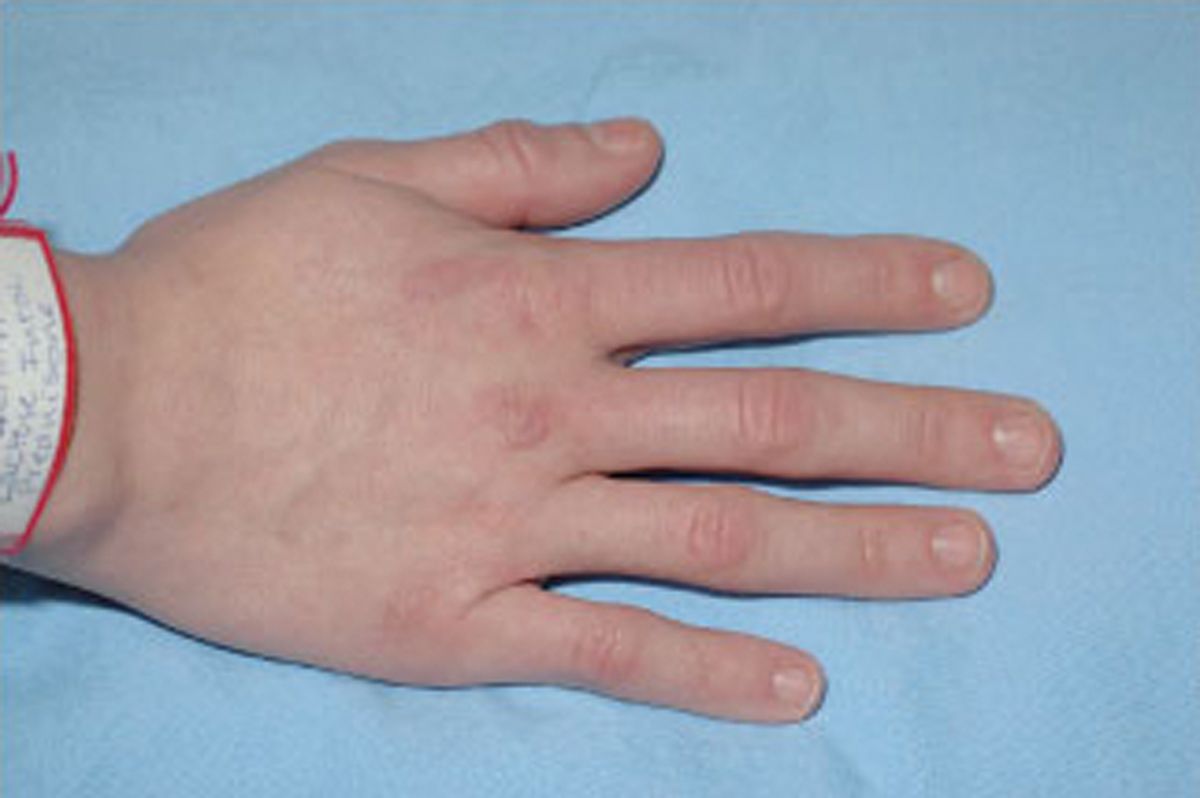
Russell's Sign is a physical indicator often associated with eating disorders, particularly bulimia nervosa. Named after psychiatrist Gerald Russell, this sign involves calluses or scars on the knuckles or back of the hand. These marks result from repeated self-induced vomiting, where the hand comes into contact with the teeth. Recognizing Russell's Sign can be crucial for early detection and intervention of eating disorders. But what exactly causes these telltale marks? How common are they among individuals with bulimia? This blog post will delve into 50 intriguing facts about Russell's Sign, shedding light on its significance, causes, and prevalence. Whether you're a student, a healthcare professional, or just curious, you'll find valuable information here.
What is Russell's Sign?
Russell's Sign is a physical indicator often associated with certain eating disorders, particularly bulimia nervosa. Named after British psychiatrist Gerald Russell, this sign can provide crucial insights into someone's health.
- Russell's Sign is characterized by calluses or scars on the knuckles or back of the hand.
- These marks result from repeated self-induced vomiting.
- The knuckles get injured when they come into contact with the teeth during the act of vomiting.
- Gerald Russell first described this sign in 1979.
- It's a telltale sign often used by healthcare professionals to diagnose bulimia nervosa.
- Not everyone with bulimia will have Russell's Sign.
- The absence of Russell's Sign does not rule out an eating disorder.
- This sign can sometimes be mistaken for other skin conditions.
- Early detection of Russell's Sign can lead to timely intervention.
- The presence of Russell's Sign indicates frequent purging behavior.
Why is Russell's Sign Important?
Understanding the significance of Russell's Sign can help in identifying and treating eating disorders early. This can make a huge difference in the recovery process.
- Russell's Sign can be a red flag for underlying mental health issues.
- It often accompanies other symptoms like dental erosion and swollen salivary glands.
- Recognizing this sign can prompt a conversation about eating habits.
- It can lead to a more comprehensive evaluation of the individual's health.
- Early intervention can prevent long-term health complications.
- It helps in differentiating between different types of eating disorders.
- Russell's Sign can be a starting point for discussing body image issues.
- It can also indicate the severity of the eating disorder.
- Healthcare providers use it as a visual cue during physical examinations.
- It can guide the treatment plan for the individual.
How to Identify Russell's Sign?
Identifying Russell's Sign involves looking for specific physical markers. Knowing what to look for can make it easier to spot.
- Look for calluses or scars on the knuckles or back of the hand.
- These marks are usually on the dominant hand.
- The skin may appear red or irritated.
- There might be small cuts or abrasions.
- The affected area can be tender to touch.
- The calluses may be rough and raised.
- They can vary in size and shape.
- The skin around the knuckles may be dry or cracked.
- Sometimes, there might be bruising.
- The marks can be more pronounced in severe cases.
Treatment and Management
Addressing Russell's Sign involves treating the underlying eating disorder. This requires a multi-faceted approach.
- Psychological therapy is crucial for treating bulimia nervosa.
- Cognitive-behavioral therapy (CBT) is often effective.
- Nutritional counseling can help establish healthy eating patterns.
- Medications may be prescribed to manage symptoms.
- Support groups can provide emotional support.
- Family therapy can be beneficial.
- Regular medical check-ups are important.
- Dental care is essential to address any oral health issues.
- Skin care can help heal the calluses and scars.
- Ongoing monitoring is necessary to prevent relapse.
Myths and Misconceptions
There are several myths surrounding Russell's Sign and eating disorders. Clearing these up can lead to better understanding and support.
- Not everyone with bulimia has Russell's Sign.
- The presence of Russell's Sign does not mean the person is seeking attention.
- Eating disorders are not just about food; they involve complex emotional issues.
- Russell's Sign is not a definitive diagnosis of bulimia.
- Men can also have Russell's Sign, not just women.
- Eating disorders can affect people of all ages.
- Russell's Sign is not caused by poor hygiene.
- It is not a sign of weakness or lack of willpower.
- Treatment for eating disorders is effective and can lead to recovery.
- Early detection and intervention can save lives.
Final Thoughts on Russell's Sign
Russell's Sign, a physical indicator often linked to bulimia nervosa, is more than just a medical term. It serves as a crucial warning sign for healthcare professionals and loved ones. Recognizing this sign can lead to early intervention, potentially saving lives. While not everyone with Russell's Sign has an eating disorder, its presence shouldn't be ignored. Understanding the implications of Russell's Sign can foster empathy and prompt timely medical advice. If you or someone you know shows signs of an eating disorder, seeking help is vital. Early detection and treatment can make a significant difference. Remember, awareness and education are key in addressing and managing eating disorders. Stay informed, stay compassionate, and don't hesitate to reach out for professional support when needed.
Was this page helpful?
Our commitment to delivering trustworthy and engaging content is at the heart of what we do. Each fact on our site is contributed by real users like you, bringing a wealth of diverse insights and information. To ensure the highest standards of accuracy and reliability, our dedicated editors meticulously review each submission. This process guarantees that the facts we share are not only fascinating but also credible. Trust in our commitment to quality and authenticity as you explore and learn with us.
